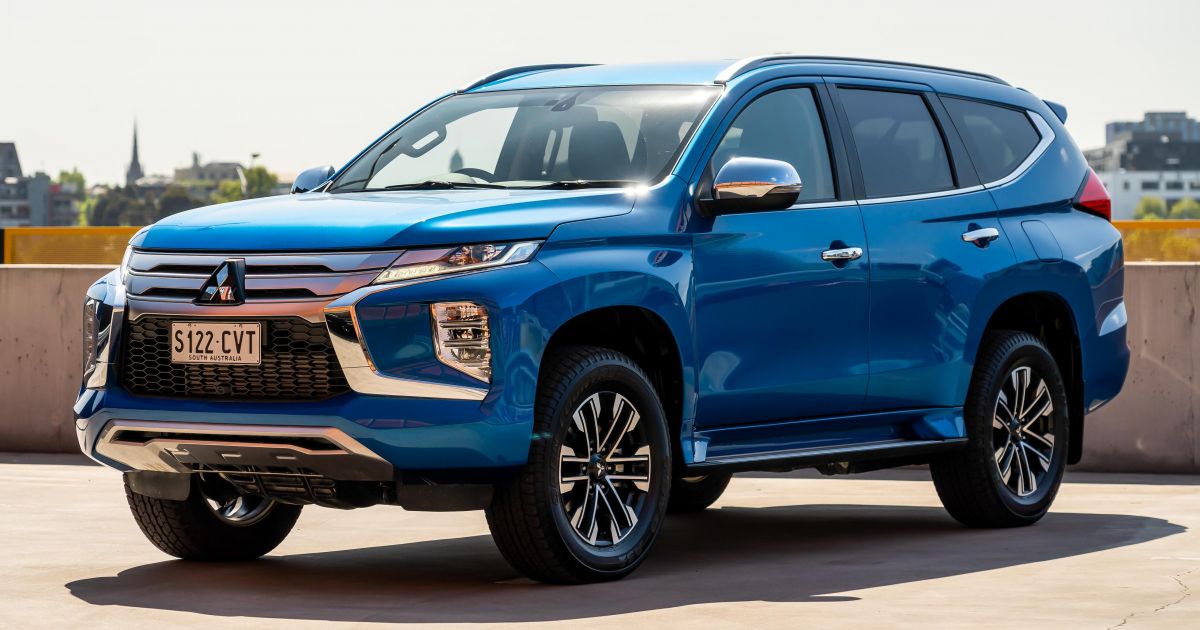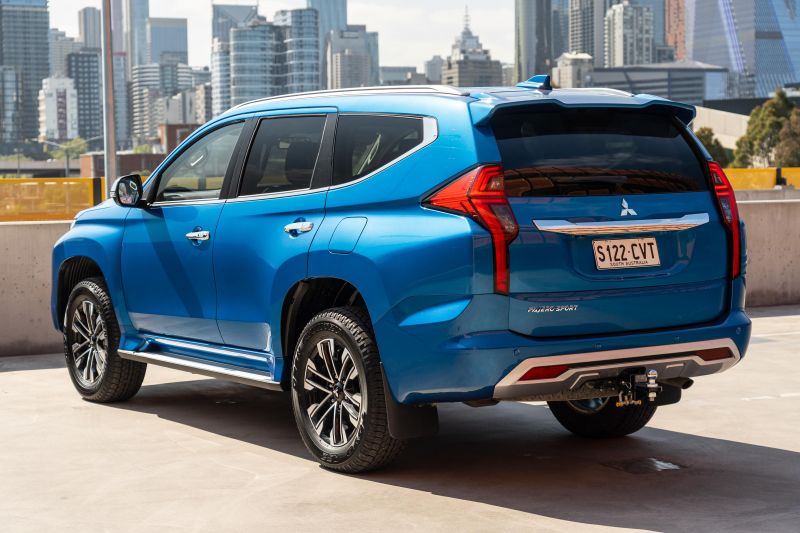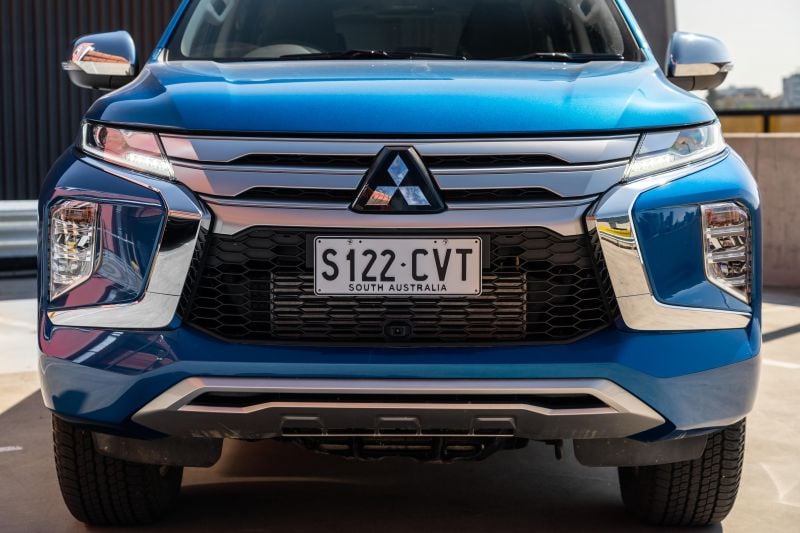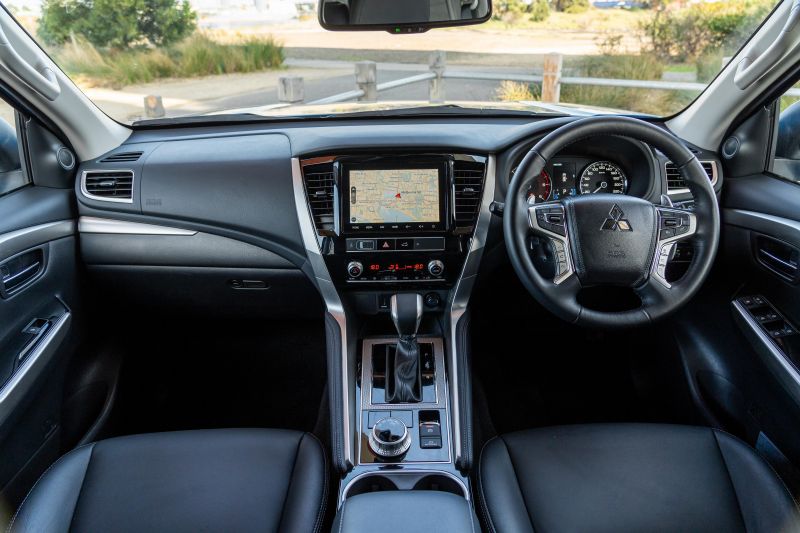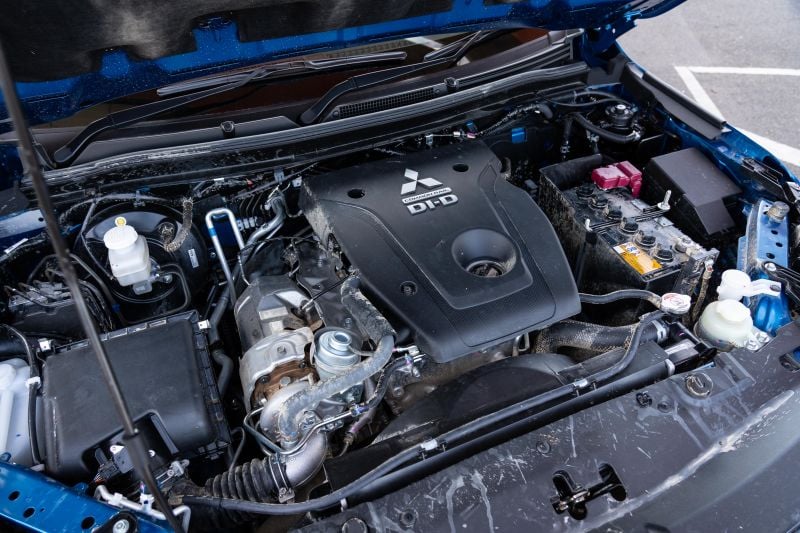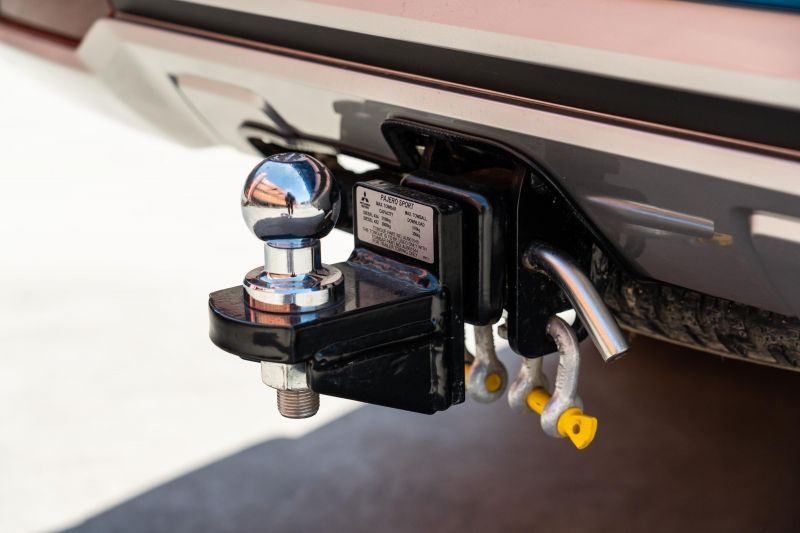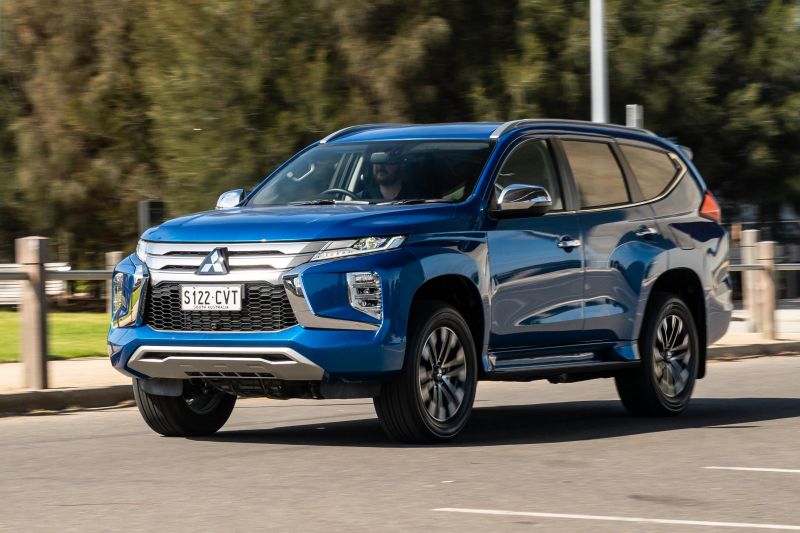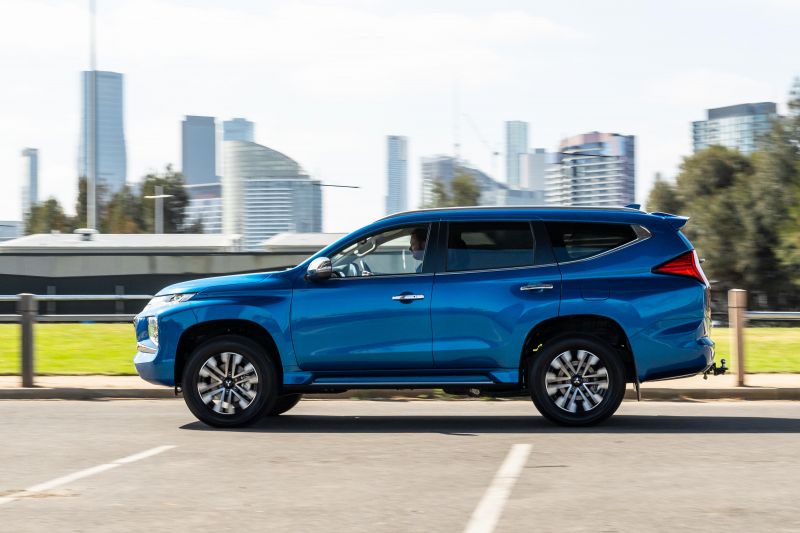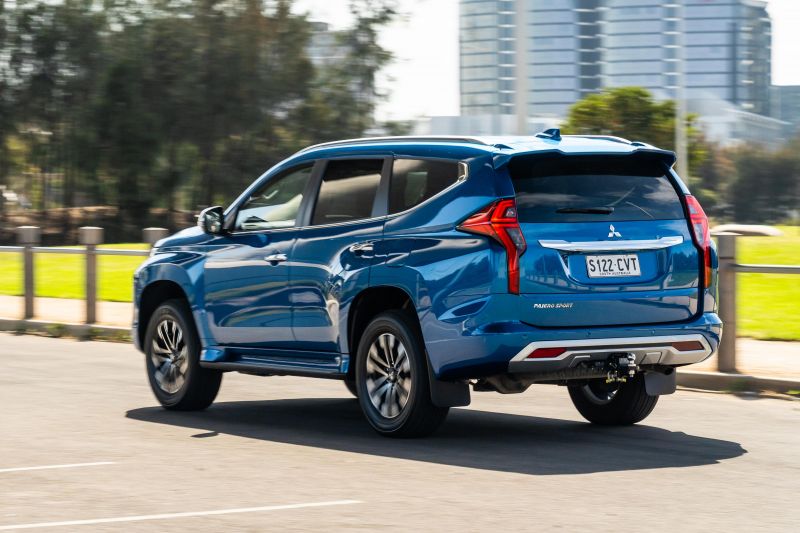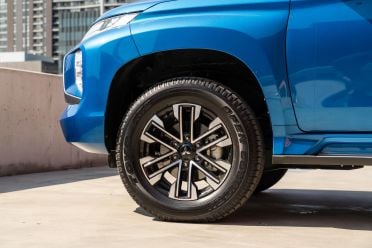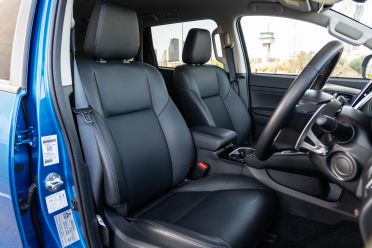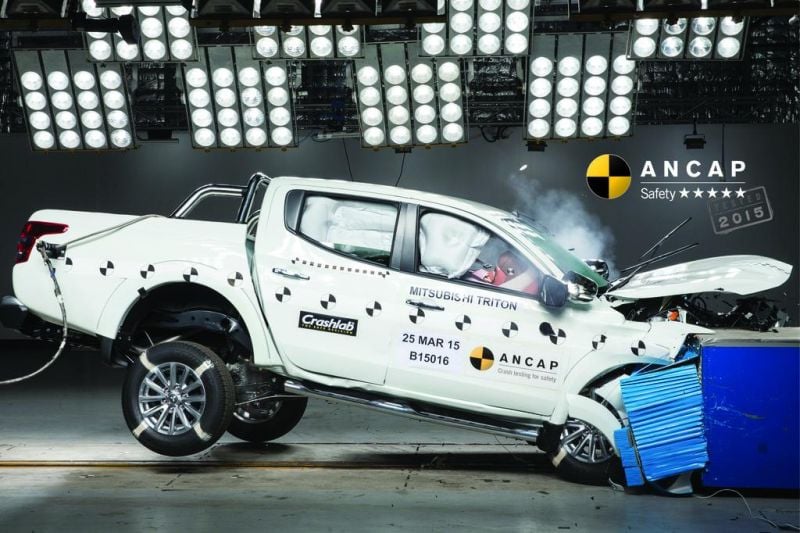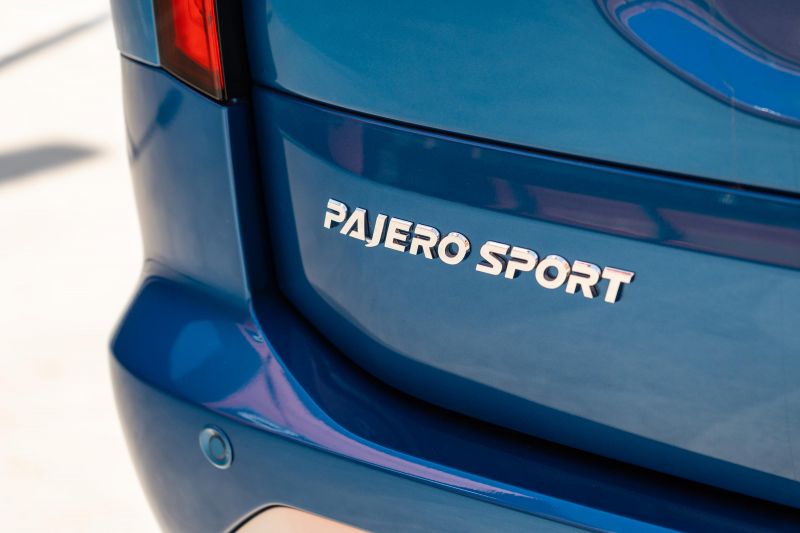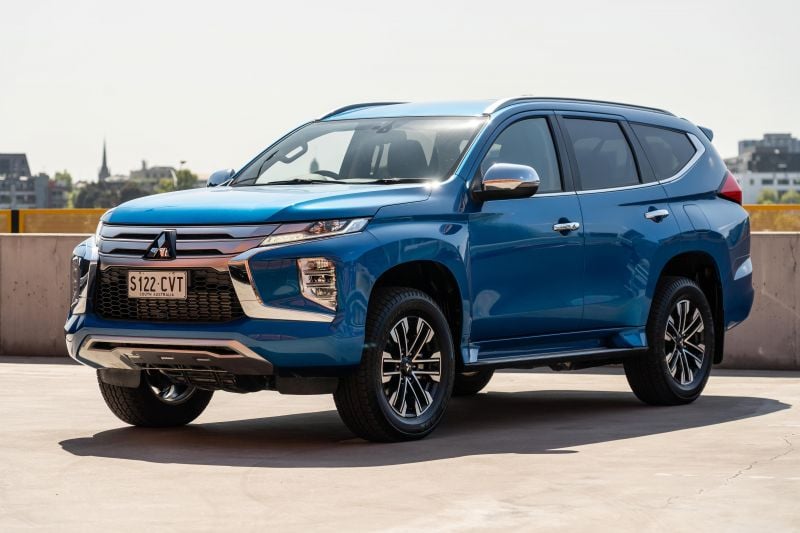The current-generation Mitsubishi Pajero Sport off-road 4×4 is getting towards the end of its run, with a new model set to appear soon based on the new-gen Triton.
The current model, whilst not the last word in modernity, remains a popular offering among buyers after a family wagon built for off-road adventures and towing.
As ever, the ladder-frame Pajero Sport competes with other rugged pickup-based SUVs such as the impressive new Ford Everest, the big-selling Isuzu MU-X, the left-of-centre SsangYong Rexton, and the Toyota Fortuner and Prado.
Mitsubishi has tinkered with the Pajero Sport regularly throughout its life-cycle, with the latest example having minor updates made in April this year.
The latest Pajero Sport gains features such as a tyre pressure monitoring system and new colour options, including the brash Impulse Blue Metallic on our test vehicle.
It’s amazing what a difference some new paint makes. Almost enough to make the somewhat awkward-looking Mitsubishi a head-turner.
How does the Mitsubishi Pajero Sport fare vs its competitors?
View a detailed breakdown of the Mitsubishi Pajero Sport against similarly sized vehicles.

Mitsubishi
Pajero Sport
How much does the Mitsubishi Pajero Sport GLS cost?
We’re driving what is probably the pick of the Pajero Sport line-up; the mid-range GLS variant. This version sits a rung above the base GLX, and below the Exceed and GSR.
The value equation isn’t too bad in context. A Pajero Sport GLS is about $6000 cheaper than a mid-range Isuzu MU-X LS-U and about $10,000 cheaper than a mid-range Ford Everest Trend at RRP.
2024 Mitsubishi Pajero Sport pricing:
- Pajero Sport GLX 4×2: $44,940
- Pajero Sport GLS 4×2: $50,190
- Pajero Sport GLX 4×4: $49,490
- Pajero Sport GLS 4×4: $55,190
- Pajero Sport Exceed 4×4: $60,690
- Pajero Sport GSR 4×4: $62,440
All prices listed are before on-road costs
What is the Mitsubishi Pajero Sport GLS like on the inside?
The Pajero Sport’s shared lineage with the Triton is fairly obvious on the inside, with plenty of utilitarian trims used on the doors and dash. However, the build quality or fit-and-finish is tough to fault.
Mitsubishi has livened-up the ambience with padding on the transmission tunnel, soft leather-like trim on the doors and console lid, silver and glossy black inserts (the latter a magnet for scratches and glare), and a very fetching leather-wrapped steering wheel with sensible button controls and chunky paddle shifters.
It’s more ‘workhorse chic’ than deluxe family SUV, but consider the target buyer and consider this vehicle’s true off-road capability.
From the nicely padded powered leather driver’s seat (optional as detailed below) you’re presented with both rake and reach wheel adjustment and a simple cluster of analogue gauges and a small trip data readout – but no digital speed display.
Above your right knee is the starter button, and you’ll notice the OEM-fitted Redarc trailer brake-controller. To your left you’ll see an 8.0-inch touchscreen with a trailer, and parking-friendly surround-view camera, plus wired Apple CarPlay/Android Auto and conventional satellite-navigation.
The home menu’s tiles are very simple to operate. It doesn’t feel particularly new or flashy in terms of user experience or processing inputs, but honestly it does the job just fine. It needs to be said; though, that the Ford Everest’s multimedia system is faster, more capable, and designed for regular updates.
Below the climate controls with a ’90s-style orange font (hey, there’s no ambiguity!) are two USB ports, a 12V socket, and oddly enough an HDMI input. There’s also a button to switch on the diff lock.
The back seats are trimmed in really nice leather as per the front and offer plenty of under-thigh support. Amenities include roof-mounted AC vents and grab handles, rear USB ports (four in the cabin all up), and a handy 220V power socket. Plus there are pockets in each seat-back and a flip-down armrest with cupholders.
Sturdy grab handles on the B-pillars and side steps make clambering in easier, and there’s space for two adults of most heights – or three kids. It’s on the narrow side; however, and the elevated seat height means headroom is a bit tight for taller folk like myself (193cm or 6ft 4).
The third row of seats is handy to have for emergencies, but to be honest they’re best used by kids only. The ‘sporty’ design also means those rear windows are narrow and not the easiest to see out of. The seats do fold down into the floor when not in use; though, as the pictures show not quite as neatly as in many SUVs.
The extra seating row does impact boot space though. The base GLX with five seats has 673 litres of capacity; whereas, with the third row folded the seven-seater only has 502L. With the third row in use this shrinks to 131L. With second and third rows folded you get nearly 1500L.
The boot in five-seater mode measures 1370mm long by 885mm tall by 1000mm between the wheel arch covers. A full-size spare tyre is mounted beneath the vehicle.
What’s under the bonnet?
All Pajero Sports use the same engine; a 2.4-litre four-cylinder turbo-diesel with peak outputs of 133kW and 430Nm, mated to an eight-speed automatic with paddles.
The GLX and GLS can be ordered with 4×2 (rear-wheel drive) but the majority of buyers opt for the 4×4 version with a rear diff lock.
It runs Mitsubishi’s nifty Super Select II 4WD system which offers fuel-saving rear-wheel drive (2H) and full-time 4WD (4H) models.
For off-roading there’s a 4HLc mode (high-range 4WD with a locked centre diff for 50:50 torque split), and traditional low-range (4L).
Fuel consumption is a claimed 8.0 litres per 100km on the combined cycle and the tank holds 68L.
Mitsubishi claims a 3100kg braked trailer maximum towing capacity, a 2775kg gross vehicle mass (meaning a 571kg maximum payload once the unladen mass is added) and a 5565kg gross combination mass.
It’s worth noting that both the MU-X and Everest, its two main competitors, offer diesels with more power and torque, 3.5t towing capacities, and greater payloads and GCMs. This partly explains why the Pajero Sport is cheaper.
How does the Mitsubishi Pajero Sport GLS drive?
While the Pajero Sport shares its ladder frame with the Triton, Mitsubishi has swapped out the ute’s rear leaf springs in favour of coils with three linkages and a stabiliser bar. It also changes the Triton’s six-speed auto for an eight-speed unit.
The 2.4-litre diesel engine is down on power and torque against its main rivals, and its kerb weight of 2204kg is on par with the 140kW and 450Nm Isuzu MU-X. There’s some rattling and vibration at idle but the refinement levels aren’t too bad for what it is.
Performance is leisurely, with a 0-100km/h time of 11.7 seconds on our Vbox, and an overtaking (80-120km/h) test time of 9.2s with two occupants.
The transmission is eager to change up a gear as quickly as it can to preserve fuel, but kicks down decisively, and can be overridden with those big metallic paddle shifters. Overall it did a good and unobtrusive job.
In terms of fuel efficiency we averaged 9.8L/100km, which is actually solid for a vehicle this size, despite missing the ADR claim.
Note the towing capacity is also some 400kg lower than the MU-X and Everest, and its wheelbase slightly shorter. The Pajero Sport is ideal for boat or caravan owners, but heavy duty towers have better options.
Being designed for off-roading, the suspension is very soft, the trade-off being quite average body control over undulations, with a tendency to float. There’s also a lot of body roll in corners, meaning the ‘Sport’ in ‘Pajero Sport’ is a meaningless bit of marketing.
The hydraulic steering is quite heavy at low speeds next to the MU-X or Everest, but on the counter this tends to give you more feel of the road or trail.
Overall we experienced pretty good road noise suppression even with those chunky Toyo Open Country A32 tyres.
One area where the Pajero Sport is undeniably good is off the beaten path. It has 218mm clearance, 30 degree approach and 24 departure angles, 700mm wading depth capacity, and an 11.2m turning circle.
The 4×4 system comes with 50:50 high-range, variable full-time 4WD using traction control, or proper low-range with a diff locker at the rear.
In short, it walked across our offset mogul, hill climb, and rock course. Both it and the Triton punch above their weight in terms of off-road duties.
What do you get?
Pajero Sport GLX highlights:
- 5 seats
- 4×2 or 4×4
- 18-inch alloy wheels
- Full-size spare tyre
- LED headlights and DRLs
- Electric park brake with brake auto hold
- Smart key with button start
- Leather-wrapped wheel
- Single-zone climate control
- Water-repellent fabric seats, manual adjust
- Reversing sensors
- Reverse-view camera
- 8.0-inch touchscreen
- Wired Apple CarPlay, Android Auto
- 4-speaker audio
- Bluetooth phone and streaming
- AM/FM/DAB tuning
- 4 x USB ports in cabin
- 1 x 220V plus and 3 x 12V sockets
- Roof rails and side steps
Pajero Sport GLS adds:
- 7 seats
- 4×2 or 4×4
- Dusk-sensing headlights
- Automatic rain-sensing wipers
- Powered tailgate
- Privacy glass
- Dual-zone climate control
- Auto-dimming rear-view mirror
- Tyre-pressure monitor system
- Satellite navigation
- 6-speaker audio
Pajero Sport GLS ‘Deluxe’ option pack adds:
- $2250 added price
- Leather seats (mix of real and synthetic)
- Powered front seats
- Surround-view camera
Pajero Sport Exceed adds:
- GLS ‘Deluxe’ option pack
- Front parking sensors
- 8.0-inch colour LCD information display
- Heated Front Seats
- 8-speaker audio system
- Remote Smartphone App:
- Operate tailgate
- Check vehicle status
- Activate car finder function
- Apple Watch connectivity
Pajero Sport GSR adds:
- Black alloy wheels
- Black rear spoiler
- Black bumper garnishes
- Black radiator grille
- Black headlight garnish
- Black roof rails
- Two tone roof – black
- ‘Pajero’ Sport bonnet emblem
- ‘GSR’ tailgate badge
Colours:
- White: $NCO
- Terra Rossa (red): $740
- Impulse Blue: $740
- Sterling Silver: $740
- Graphite Grey: $740
- Black Mica: $740
- White Diamond: $940
Is the Mitsubishi Pajero Sport GLS safe?
The Pajero Sport no longer carries an ANCAP crash rating because the age of its design means it has lapsed, but the vehicle scored five stars way back in October 2015 and the same basic design carries over.
Passive safety features include dual front, front-side and head-protecting curtain airbags, as well as one for the driver’s knee. There are two ISOFIX child-seat anchors, three top tethers, and child-proof door locks.
Driver assist aids standard to all models include forward autonomous emergency braking (AEB), adaptive cruise control, a speed limiter, reversing sensors, and trailer stability control.
Features such as blind-spot monitoring, rear cross-traffic alert and an ultrasonic misacceleration mitigation function only come on the GSR and Exceed models – in this day and age we’d expect these to be standard.
How much does the Mitsubishi Pajero Sport GLS cost to run?
Mitsubishi provides a market-leading 10-year warranty with a decade of capped price servicing, but there are some caveats – one being the distance limit is 200,000km.
For another, the warranty reverts to five years and 100,000km if you choose to service your Pajero Sport at an independent mechanic rather than a Mitsubishi dealer. Of course, the entire point of this is to get you returning to the dealer each year, because servicing is where they make most of their profit.
Pajero Sport service pricing:
- 12 months or 15,000km: $449
- 24 months or 30,000km: $549
- 36 months or 45,000km: $499
- 48 months or 60,000km: $849
- 60 months or 75,000km: $549
- 72 months or 90,000km: $849
- 84 months or 105,000km: $549
- 96 months or 120,000km: $999
- 108 months or 135,000km: $699
- 120 months or 150,000km: $899
To put these prices into context, the average cost of a basic service over the first five years is $579. By contrast the average per-visit price over this period for the Ford Everest is $330 and for the Isuzu MU-X it’s $487, making the Mitsubishi a bit pricier to maintain.
All Mitsubishi vehicles are sold with 12 months of roadside assist, which can be maintained for up to four years. As before, this is only if the vehicle is serviced on schedule at an authorised Mitsubishi dealer.
CarExpert’s Take on the Mitsubishi Pajero Sport GLS
The Pajero Sport is getting on and due for replacement. In aspects such as engine output, driver assistance features and interior space and design, its main rivals have moved past it.
However it remains decent value in context, has a reassuring decade-long warranty with dealer servicing, and this model is a known quantity with runs on the board.
Keep an eye out for runout price campaigns perhaps, and you might snare yourself a quality adventure-ready 4×4, so long as you weigh the pros and cons.
Click the images for the full gallery
BUY: Mitsubishi Pajero Sport
MORE: Everything Mitsubishi Pajero Sport

